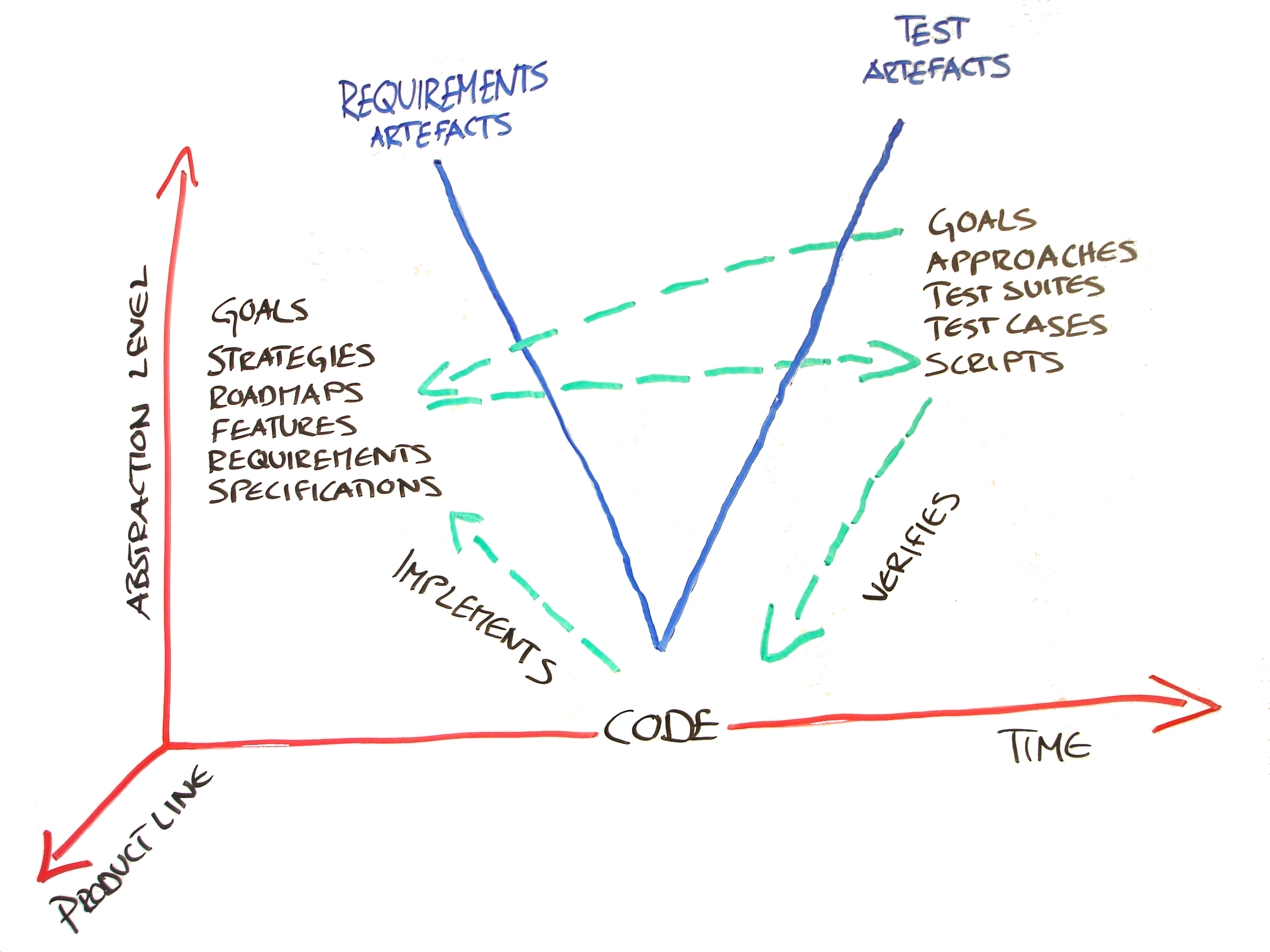Nyhetsvisning
1264201200
 Conceptual model of the research domain for EASE theme D.
To ensure that software becomes what you intend, the alignment of requirements engineering and testing are of paramount importance. We need to check that all requirements are realized and up to quality, but also make sure that we do just enough. There is much research in the two fields of testing and requirements engineering, but very little in the boundaries in-between concerning the coordination of the areas. This is especially important in large, complex systems developed in distributed organizations utilizing cutting edge technology.
Conceptual model of the research domain for EASE theme D.
To ensure that software becomes what you intend, the alignment of requirements engineering and testing are of paramount importance. We need to check that all requirements are realized and up to quality, but also make sure that we do just enough. There is much research in the two fields of testing and requirements engineering, but very little in the boundaries in-between concerning the coordination of the areas. This is especially important in large, complex systems developed in distributed organizations utilizing cutting edge technology.EASE takes an holistic approach to this issue. The first step was to study industry practice, conducting large and in-depth empirical evaluations in industry in collaboration with some of the most successful companies in the world. Starting with current practice enables not only real challenges to be identified, but also the possibility to learn what works, and paving the way for a real technology and knowledge exchange between researchers and industry practitioners.
So far, EASE Theme D has conducted 22 in-depth interviews with 5 companies to elicit challenges, state-of-practice, and good ideas. The results so far have been a gold mine of possibilities pointing to ideas for industry relevant research into how to handle the challenges with realistic technology. This is made possible through the joint competencies between researchers from LTH and BTH, combining their knowledge and experiences to support the development of new methods, modells, technologies and processes.
– EASE plans research in the area for at least another 8 years. Therefore it is crucial to develop cooperation within companies, between companies and the involved research groups., says Björn Regnell, coordinator of EASE Theme D.
The first scientific publication is about to be published and a suite of research paper is in the pipeline.
The understanding of the field deepens within the participating companies as long as the research progresses. Another important gain is the synergies among the EASE research groups.
EASE now has both organizational and financial muscles to work in long terms. EASE brings together world-leading software companies in a joint effort for at least a decade. This funding covers research for at least two generations of PhD students. The first results
The first report in the area is based on the rich case study findings of one of the studied companies and identifies challenges for requirement-verification alignment in that particular company. It answers questions regarding what hinders and supports a successful coordination between requirements and tests processes and artifacts. The study has created a clear structure for the various problem areas and has provided a validated basis for future studies in other cases. A baseline with deep problem understanding is important to have before new technology and advanced solutions are developed, to make sure that technology and solutions are relevant for current and future practice.
In autumn 2009, early findings were presented for practitioners and researchers who are close to the study. During spring it will presented to other EASE member companies. The study will also be presented in a wider community through academic publications and other dissemination efforts.
Källa:EASE
Sidansvarig: Jonas.Wisbrant@cs.lth.se | 2019-02-19
